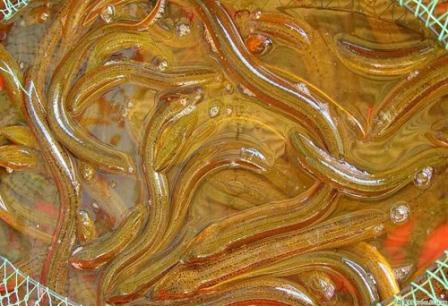New technology of mixed culture of fish and duck: how big fish fry should be put in mixed culture of fish and duck? Benefits of mixed culture of fish and duck
Small fish species, ducks can be caught and eaten. Therefore, it is necessary to stock fry above 50 grams in the pond to solve this problem.
1. Fish and duck mixed culture. That is to say, duck shed is built on the dike of fishing pond, part of the pond ridge is enclosed as activity field, and ducks are directly raised on the fishing pond. This way can better play the ecological effect of fish and duck symbiosis and mutual benefit. Peasant households can maximize benefits by choosing appropriate management methods according to local conditions.
2. Make a reasonable match. Generally, 100~150 ducks per 667 square meters are suitable for duck breeding in fishing ponds. If more than 200 ducks are released, the filter-feeding and omnivorous fish such as silver carp, bighead carp, tilapia or carp and crucian carp should be mainly raised, and grass, bream or herring should not be mainly raised. In addition, pay attention to changing water and oxygenation. Every 667 square meters of fish pond duck breeding should not exceed 250, otherwise fish production will drop significantly. Based on the annual output of 40~50 kg of feces per duck, the duck fish pond should increase 4800~7500 kg of fertilizer per 667 square meters than that without duck culture, effectively fertilize the pond water, reproduce a large number of plankton, and provide sufficient feed for the growth of silver carp and bighead carp. Duck fish pond can be silver carp, bighead carp mainly, every 667 square meters can put 50~75 kg fish species, 1000~1500 tail. Grass and black carp are the main species, 75~1500 kg fish species are placed per 6667 square meters, 1000~1500 fish. Farming method, 667 square meters, net fish production can reach more than 400 kg.
3. Strengthen feeding management. In order to facilitate the centralized management of ducks, some fishing ponds can be surrounded by old nets, screen cloth and other materials as duck activity ponds. It is better to raise 2~4 ducks per square meter of water surface. The height of the nets is 40~50 cm above and below the water surface, so that fish can enter and exit freely. Every morning and evening, ducks are fed in the pool ridge activity field. In the evening, duck dung and residual food are cleaned into the pool after the ducks enter the shed. Drive ducks out of the shed in the morning. After picking up eggs, clean duck dung in the shed into the pool. In summer, ducks have a large amount of feces, and the water quality is too fertile. It is necessary to add new water and reduce the amount of fertilizer.
Summary: Although polyculture of fish can reduce costs, but in the fish pond duck must pay attention to the water quality problem, when ducks in the water activities inevitably produce duck dung, but not to a certain extent to change the water to the fish pond, it is easy to cause fish pond fish because of unclean water quality and disease.
The harmful organisms such as larvae of sick fish and aquatic insects eliminate the adverse effects on the growth of fish. At the same time, duck dung falls into the water, and a small part is directly eaten by fish in the form of organic debris. Most of them are decomposed and absorbed by the water body, which promotes the growth of plankton and increases the natural food of fish, thus increasing the yield of fat fish. In addition, ducks swim back and forth on the water surface, which increases the dissolved oxygen density in the water to a certain extent and improves the water environment; fish and duck mixed culture solves the problem of duck dung pollution to the environment.
Related
- A course of planting techniques and methods on how to grow carrots
- How to plant the latest tulips?
- Is it better to pick tea in the morning or in the afternoon? When is the best time for tea to be picked? what is the third or fifth tea?
- Launch Yuanxiao Happy combination Haocha + Tea Yuan healthy Taste
- Penghu Tourism "Fireworks 20 Parade with You"
- 2022 West Lake Happiness holds "Digital Revitalization Voucher" and draws iphone13 and laptop.
- Banqiao Fuzhou social houses are designed to change start-up combined with police elimination to create a safe and livable environment
- The convenient measure of "mechanical weeding" in Xinbei has been abused and the Agriculture Bureau has imposed heavy penalties on the illegal land consolidation.
- Changgeng University Joins Hands with Four Memory Factories to Rescue Memory Talent Shortage
- The list of Taiwan's top 100 MVP managers is listed by the Director-General of the Farmers' Association of Sanxia District.



